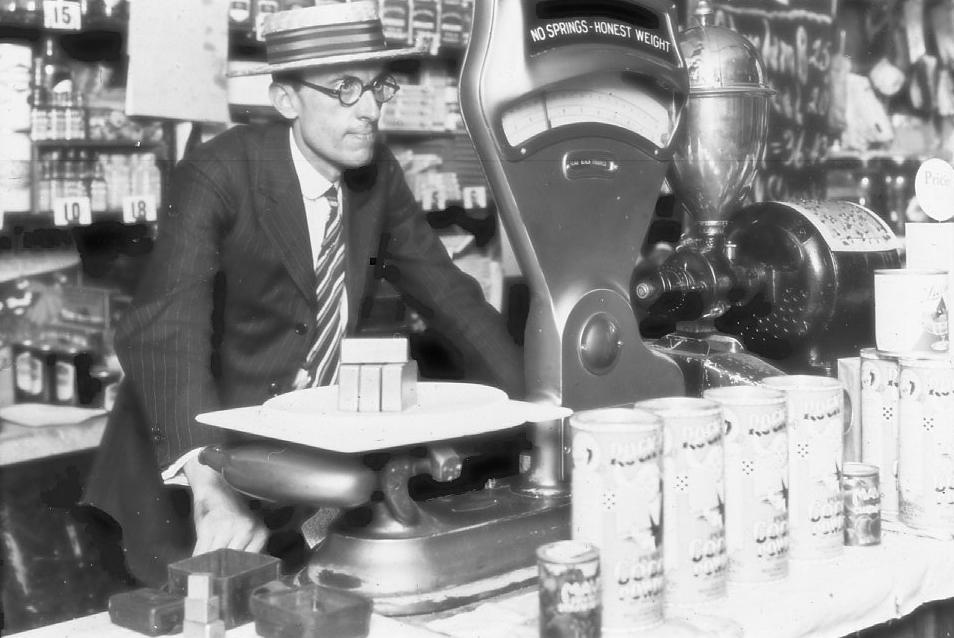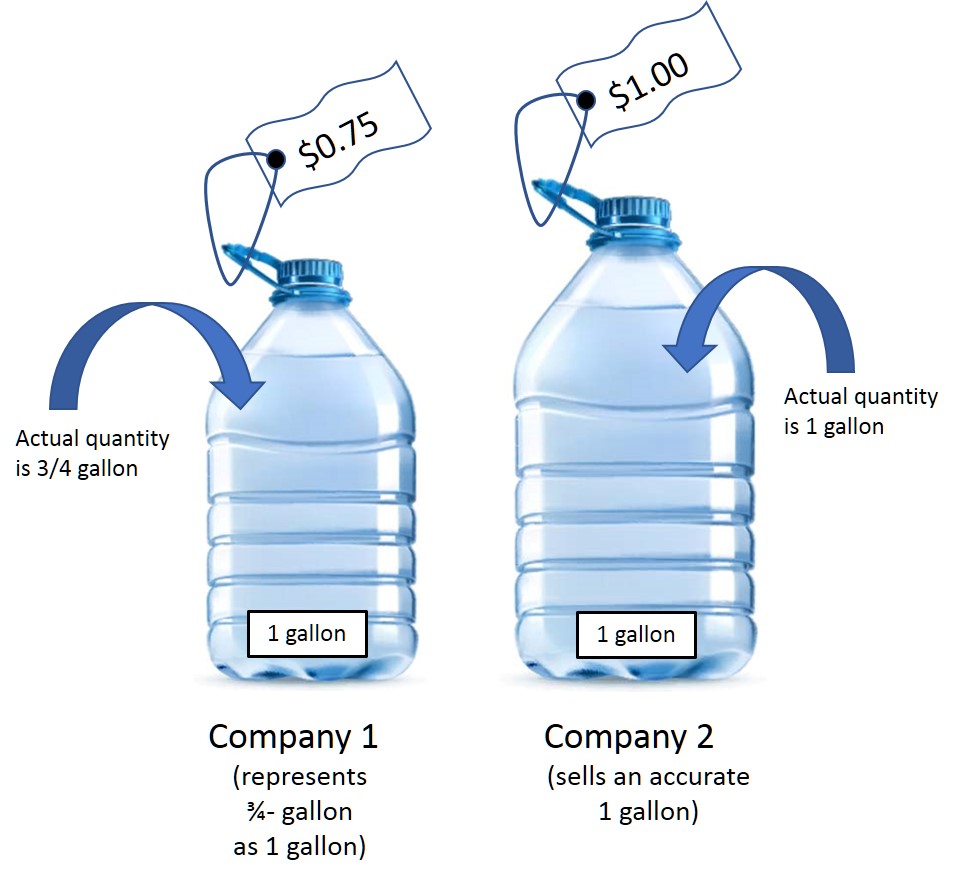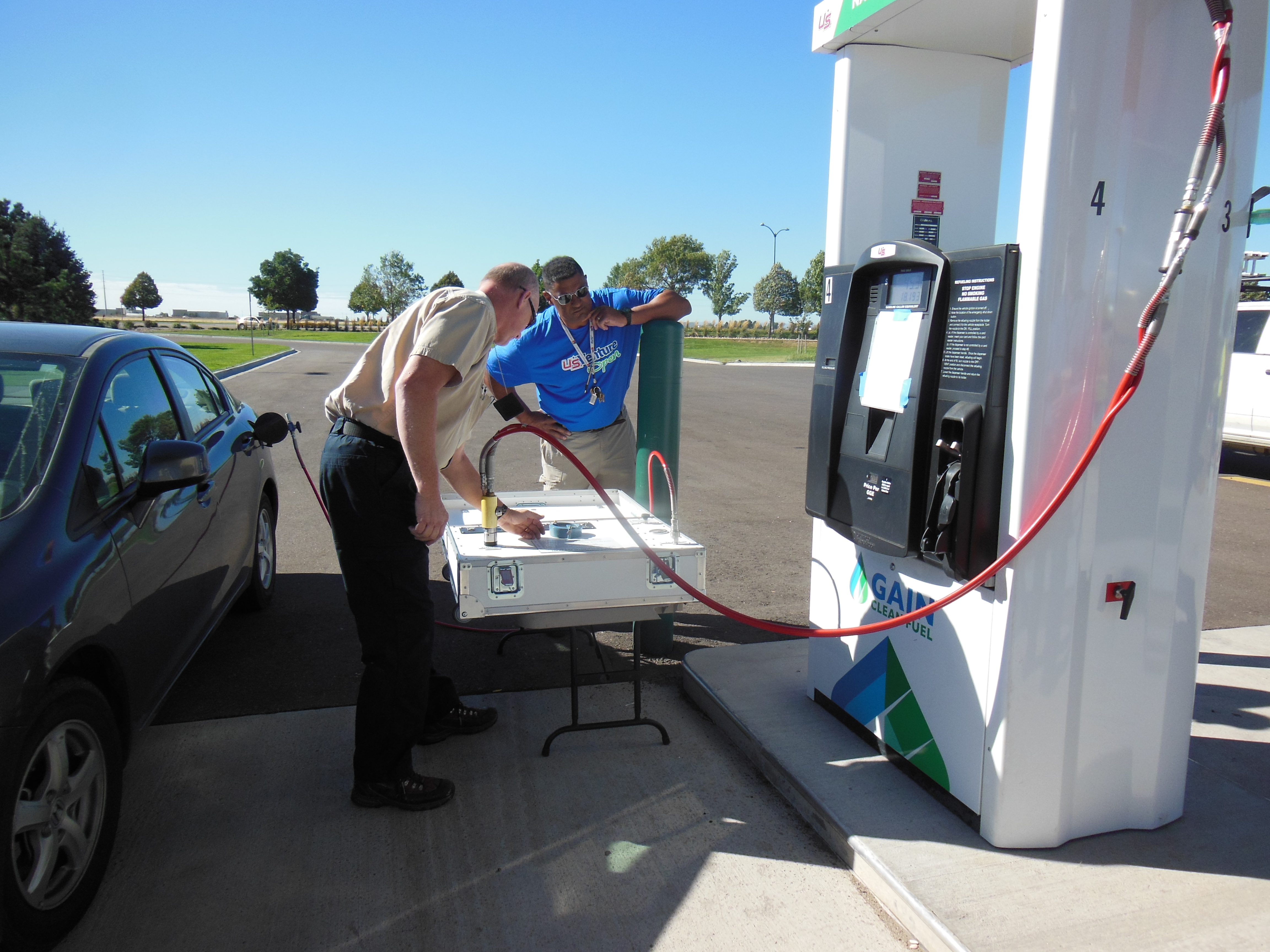Taking Measure
Just a Standard Blog

Keeping commerce fair for all requires the constant vigilance of trained and dedicated weights and measures inspectors. Snappy hats are not required, though they are recommended!
Happy Weights and Measures Week 2018!
What’s “Weights and Measures Week,” you might ask? That’s the week set aside every year to commemorate the signing of the first weights and measures law by President John Adams on March 2, 1799. Unless you love history, you’re probably thinking, “Boring! That was so long ago, it can’t possibly be of interest to me.”
Well, read on.
Let’s first consider all the things you buy based on weight, measure or count. Milk for your cereal; gasoline (or other fuel) for your car; carpet for your family room; meat and vegetables for your dinner; lumber to build your home; toothpaste; and even medications to keep you healthy. You get the idea. So many of the goods we buy are bought or sold based on some sort of measurement.
Think about how hard it would be if you had to buy or use those things without measurements. How would you make a choice between four differently sized boxes of cereal offered at different prices if there weren’t a weight declared on the package to help you compare the cost? How would you figure out the best value if you bought your milk by the jug: small, medium, large … what would that mean? Or what if your prescription pills were sold by the bottle instead of by count? What if there were measurements for all these items, but you weren’t sure if the measurements were accurate? In most of these cases, it would be almost impossible to make an informed buying decision.
And it’s not just consumers who need this information and assurance of accuracy. Think about all the businesses selling these products. What if one company were to sell less than the amount represented and, because they are selling less product, can sell it at a lower cost than their competitors? For example, let’s say Company 1 sells ¾-gallon of water but represents it as 1 gallon. Company 1 can probably offer the product at a lower price than Company 2 (a competing company that is selling the same product but is selling it based on accurate measurements). Unsuspecting customers may be drawn to Company 1’s product because of the lower price. If they were to do that, though, they would not only be paying for product they aren’t receiving, but the competing company is also put at a competitive disadvantage by the loss of customers and/or by having to drop their prices to compete. It’s weights and measures officials who inspect and test the measurement equipment, (e.g., gas pumps) and the practices of both companies that help provide competing businesses with a level playing field to ensure they can compete fairly.

Every year, the National Conference on Weights and Measures picks a new theme for weights and measures week, putting a focus on some aspect of weights and measures. This year’s theme, “Back to basics as we arrive in the cloud,” includes a shout out to the advances made in measurement technology. In the weights and measures world, this calls up an image of how the “cloud” has changed the way we make measurements in the commercial marketplace.
As I read the theme, I couldn’t help thinking back to the first days of my weights and measures career. As a weights and measures inspector almost 35 years ago, I traveled from business to business, inspecting and testing a wide variety of weighing and measuring equipment (think grocery store scales and gas pumps). I would place specially made weights on scales and dispense gasoline from service station dispensers into precisely calibrated measure containers, making sure the equipment was accurate and used properly. Before leaving a business, I would also make sure the accuracy adjustments on these measuring instruments were protected from tampering by placing a special wire seal on the adjustment mechanism. The whole focus of those inspections was to make sure consumers got what they paid for and that businesses got paid fairly for the goods and services they sold.
In those days, gasoline cost less than a dollar a gallon, home computers were just gaining popularity, and many supermarkets still used those clunky old drum scales that loomed over you on top of the deli case. And cell phones? Ha! If you were fortunate enough to own one, you certainly couldn’t fit it in your pocket, let alone place an order for take-out food or play a game on it.
A lot has changed since then! My job has changed for one thing. I’m no longer a weights and measures inspector (though I work closely with many who are). I now work for the National Institute of Standards and Technology (NIST), a non-regulatory agency of the U.S. Department of Commerce. In the Office of Weights and Measures (which, by the way, predates NIST, having been established in 1836) at NIST, my colleagues and I work hard to support those same regulators—and the companies they regulate. We help get many of the measurements made by scientists at NIST out into the marketplace so you can be assured that the products and services you buy are accurately weighed or measured. To do this, we work to develop documentary standards, which regulators adopt, and specify how accurate the weighing and measuring equipment must be and how they need to be used to make good measurements. We also develop and provide guidance and training to regulators and industry on how to inspect and test weighing and measuring equipment and packaged products.
The most significant changes I’ve seen, however, are in the weighing and measuring devices and how they are used. Today, scales in the supermarket are often computerized and download pricing information and discounts that get applied at the cash register when the item is weighed along with data on your buying history. And the little window where you used to view just the weight of your item? Today’s display is often like a mini television screen, giving you a running total of your purchases and even advertisements. And your receipt? You can now get them at the register, have them emailed, or even get them sent to your phone. A gas pump can be adjusted or calibrated remotely from the dispenser—from inside the service station or even from another state!

And if those changes weren’t enough, companies are developing apps to interface with weighing and measuring equipment to provide flexibility to both businesses and consumers. Consider one of the most recent standards added to NIST Handbook 44, the document that includes requirements adopted by states for all manner of weighing and measuring equipment used in commerce. Last July, a set of requirements were added to address one of the first app-based “transportation network measuring systems.” You probably know these systems as the convenient ride-hailing services you can call using an app on your cell phone. These systems not only use an app-based customer interface, they use measurements made via global positioning satellites to calculate part of your fare.
While some might be concerned about how these changes affect the products they buy, these changes bring good things to the marketplace. And that’s good news! Our transactions can be conducted more efficiently than ever and there are more safeguards built into these systems than ever to help protect consumers and businesses. And, thankfully, the weights and measures community (regulators, industry, and others like NIST) is on top of these changes. We have adapted requirements and test procedures to help make sure transactions conducted with new technologies remain accurate and transparent, and industry has worked hard to make sure the equipment is designed and used appropriately.
And, there’s one more piece of good news. You’ll be happy to hear that some of the basics haven’t changed. Several thousand weights and measures inspectors still go out every day to inspect and test weighing and measuring equipment and pre-packaged products. All to provide the businesses they regulate and consumers like you with that same level of protection you’ve always had. I’d say that’s cause for celebration.
Now that you’ve read about how weights and measures professionals work every day to make your life better, I hope you’ll see “Weights and Measures Week” in a whole different light—and maybe you’ll even want to celebrate it all year! Okay, that’s probably not going to happen, but I think you’ll agree that there is good reason to set aside at least one week a year to consider what our economy would be like without weights and measures officials working behind the scenes.
So, “Happy Weights and Measures Week”! And, if you see someone calibrating a gas pump or testing scales at the grocery store, be sure to say thanks. I know they’ll appreciate it.






Thanks for the update with the weight and measure week, am a new employee with the Department of W&M (Nigeria) how can I develop myself in this new line of work?